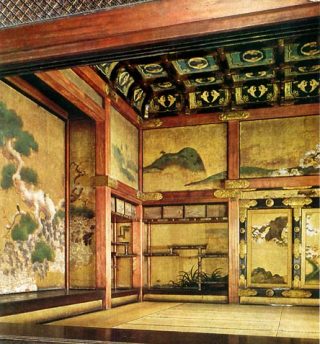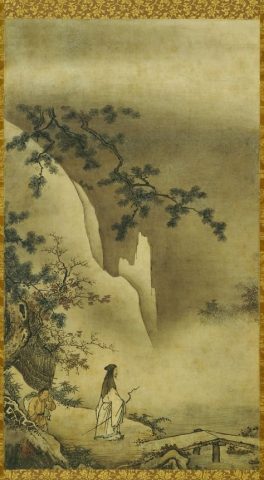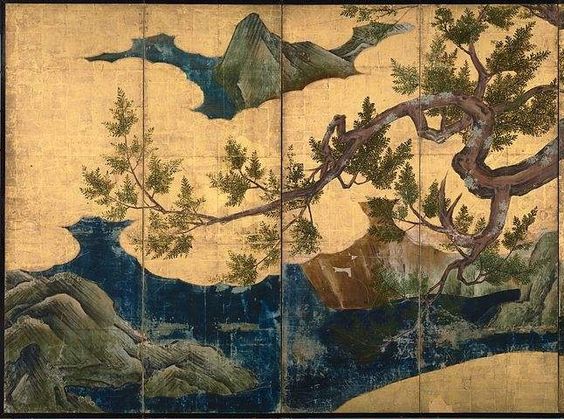The Kanō school has been the most prominent and long-lasting Japanese painting school: after being founded in Kyoto in the 15th century, and later transferred to Edo, that influential institution lasted up to the 19th century. Therefore, the cultural hegemony of that school developed for full three-hundred years and over. The reasons behind that importance and success need being investigated with a look at that school’s history and style.
Kanō Masanobu, Landscape
From a historical perspective, the Kanō school was characterized by the fact that painting teaching and body of rules passed down through generations of the same family. To take but the first three of them, the founder, who gives his name to the school, was Kanō Masanobu (1434–1530, Muromachi eve) who adopted the Chinese Zen painting in sumi ink. The style was later revised and established by his son Kanō Motonobu (1476–1559), last taken to its finest hour by the grandson Kanō Eitoku (1543–1590, Momoyama eve) who rearranged the painting to customer’s demands and tastes.
Kanō Motonobu, Birds and flowers of the four seasons
Kanō Eitoku, Cypress Tree (detail), 1590, Tokyo National Museum
The technique changed over time and reached full maturity by Kanō Tan’yū (1602–1674) in the Edo period. It is worth also mentioning Kanō Tan’yū‘s niece Kiyohara Yukinobu (1643–1682), who was active as a member of the same school.
As regards style, the Kanō school began, as mentioned above, by Chinese Kanga painting in ink whose typical subject were landscapes. This kind of painting admirably happened to merge with the Japanese Yamato-e painting, this characterized by vividly colored surfaces and symbol-laden subjects as flowers, birds, trees.

The hallmark of that school was the extensive use of golden background on screens and sliding doors, in order for them to bright in a highly luxurious fashion. As a result, the Kanō school established as the leader artistic movement for the warrior aristocracy, one who lived in large castles, with ornately decorated apartments, designed to be intentionally intimidating owing to the feel of power they provided.

During the Momoyama eve, Toyotomi Hideyoshi did distinguish as an important customer; later, in the Edo period, the shogunate settled in the namesake city with the Tokugawas and consequently also moved the Kanō school. Whereas the distinguished features in the Momoyama period were luxury and sense of wealth, the style became more subtle and essential under the influence of the Tokugawas.
Ukiyo-e existed alongside, without being detrimental for, the Kanō school which, do not forget, was rather tailored to the government élites: also artists who were not enrolled in that school were likewise trained, by Kanō masters, in the same canons. Since the beginning of the Meiji eve (1868-1912), from which the westernization process developed, the Kanō school was condemned to inexorable decline because such a school symbolically represented that feudal Japan’s culture that it was intended to overcome.
Copyright © arteingiappone – All rights reserved
Credits for the picture of Nijo Castle:
http://www.art-and-archaeology.com/japan/nijojo7.html


